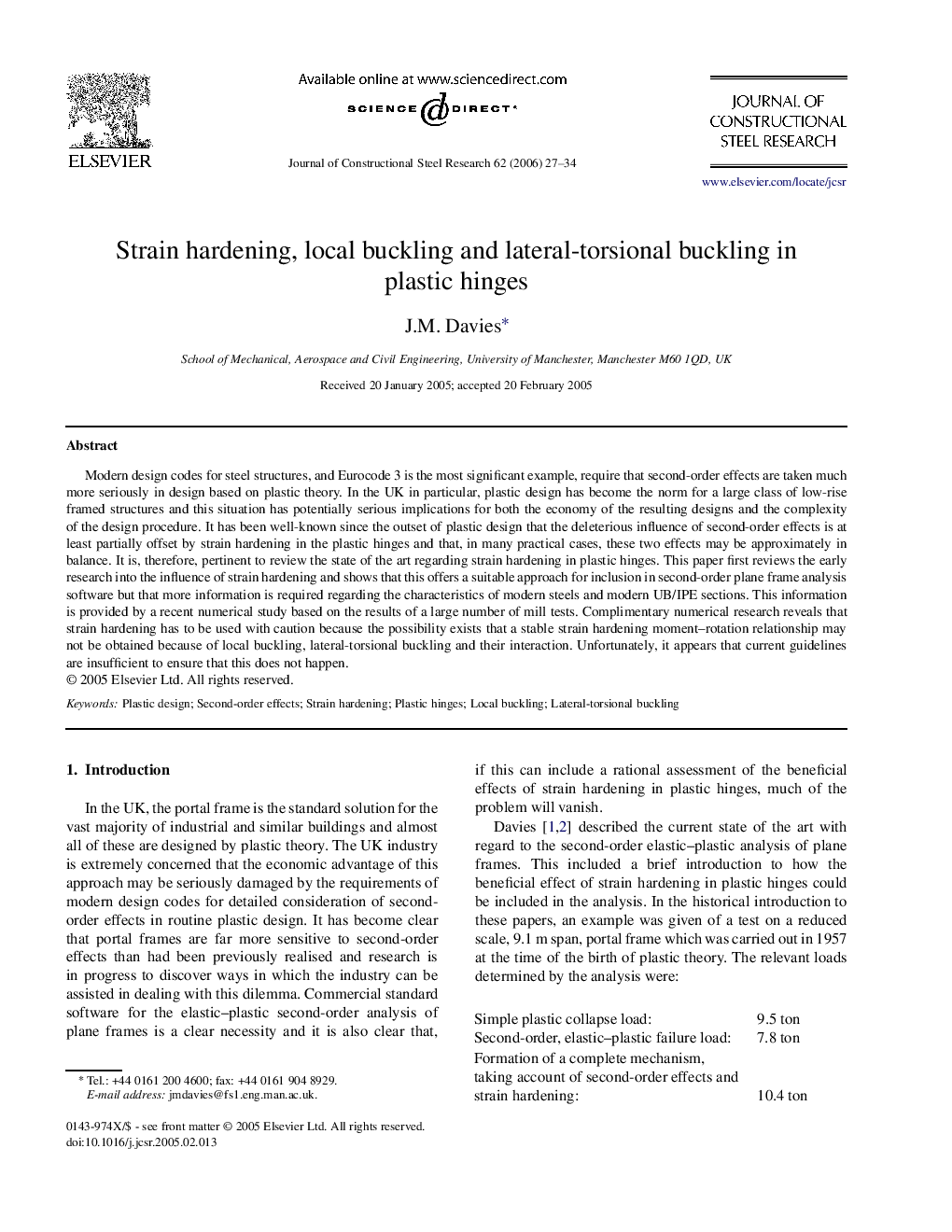| Article ID | Journal | Published Year | Pages | File Type |
|---|---|---|---|---|
| 286200 | Journal of Constructional Steel Research | 2006 | 8 Pages |
Modern design codes for steel structures, and Eurocode 3 is the most significant example, require that second-order effects are taken much more seriously in design based on plastic theory. In the UK in particular, plastic design has become the norm for a large class of low-rise framed structures and this situation has potentially serious implications for both the economy of the resulting designs and the complexity of the design procedure. It has been well-known since the outset of plastic design that the deleterious influence of second-order effects is at least partially offset by strain hardening in the plastic hinges and that, in many practical cases, these two effects may be approximately in balance. It is, therefore, pertinent to review the state of the art regarding strain hardening in plastic hinges. This paper first reviews the early research into the influence of strain hardening and shows that this offers a suitable approach for inclusion in second-order plane frame analysis software but that more information is required regarding the characteristics of modern steels and modern UB/IPE sections. This information is provided by a recent numerical study based on the results of a large number of mill tests. Complimentary numerical research reveals that strain hardening has to be used with caution because the possibility exists that a stable strain hardening moment–rotation relationship may not be obtained because of local buckling, lateral-torsional buckling and their interaction. Unfortunately, it appears that current guidelines are insufficient to ensure that this does not happen.
